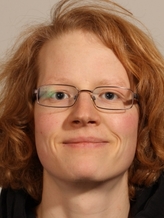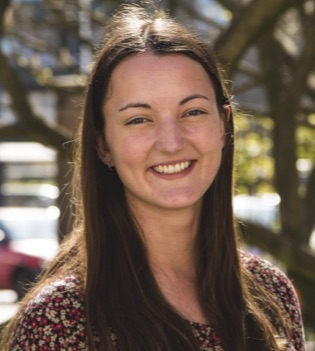
Caterina Doglioni's DARKJETS group
Searching for DARK matter with JETS
The DARKJETS project
When we look around us, at all the things that we can touch and see, all of this is visible matter. And yet, this makes up only a small fraction of the matter in the universe.
We know that the vast majority of matter is Dark. Dark matter does not emit nor reflect light, nor have we yet observed any known particle interacting with it. Dark matter is massive, being subject to gravity. It is through its gravitational effects on other matter in space that its existence was inferred.
What is Dark Matter made of?
This is one of the questions that physics yet has to answer. A compelling hypothesis is that Dark Matter is made of particles interacting weakly with conventional particles. In this case, Dark Matter can be produced in the collision of particles such as those produced at the Large Hadron Collider, at the CERN laboratory in Geneva.
Many previous searches for Dark Matter have been performed, with no discovery so far. However, this hypothesis has not been ruled out. A more powerful particle collider could still have a chance of discovering these elusive particles. Such a machine is now available and taking data since 2015: it is the upgraded Large Hadron Collider. It is with this machine that we are searching for subtle effects due to the presence of Dark Matter particles, using the largest detector ever built, the ATLAS experiment.
With DARKJETS and together with our colleagues at the University of Geneva, Ohio State University, the University of Heidelberg, and Oxford University, we have introduced a data taking technique that is new to the ATLAS detector. The amount of experimental data taken is generally limited by constraints in recording the selected events to storage. We have lifted this limitation by applying enhanced real-time analysis algorithms and recording only the subset of information relevant to the searches. The more data, the more chances there are to detect rare processes: the deployment of this technique will enable new and more sensitive searches for the particles that are the portal between ordinary matter and Dark Matter.
We are currently analysing data from the LHC collisions using novel techniques, to either discover or constrain the particle nature of Dark Matter. In case of discovery, the characterization of the new phenomenon in terms of Dark Matter can be confirmed using complementary experiments in space, with synergy within Sweden and internationally. In case of no discrepancy with respect to known phenomena, our work will further constrain the particle nature of Dark Matter and point to future paths in the search for answers to a mystery of our Universe.
The DARKJETS project is financed by the European Research Council, GA 679305.The DARKJETS team
The DARKJETS team, lead by Caterina Doglioni as PI, is made of three talented physicists: one post-doctoral researcher, Jannik Geisen (DE), and two PhD students, Eva Brottmann (DK) and Eric Corrigan (SE/UK). From 2016 to 2019, William Kalderon (UK) was part of the team, now he is a postdoctoral fellow at Brookhaven National Lab.
DARKJETS results
Together with Prof. A. Boveia from Ohio State University, I authored a review on Dark Matter at colliders , published on Ann. Rev. Nucl. Part. Sci. 68 (2018) p 429-459
In Nature Physics and Astronomy, Insight issue on Dark Matter: March 2017 Volume 13, No 3 , I co-edited a Progress article titled Search for Dark Matter at Colliders
The results of the "Trigger-object Level Analysis" technique, new to ATLAS and used for the dark matter searches in DARKJETS can be found in the paper Search for low-mass dijet resonances using trigger-level jets with the ATLAS detector in pp collisions at sqrt(s)=13 TeV that has been published in Physics Review Letters in 2018. DARKJETS contributors: Will Kalderon, Eva Hansen, Eric Corrigan, CD.
The results of the "Dijet+ISR" analysis technique also used for dark matter searches in DARKJETS is described in the paper Search for low-mass resonances decaying into two jets and produced in association with a photon using pp collisions at s√=13 TeV with the ATLAS detector that has been submitted to Phys. Lett. B. in 2018. DARKJETS contributors: Will Kalderon, Eric Corrigan, CD.
The data taking and analysis technique called "Trigger-object Level Analysis" used for the dark matter searches in DARKJETS is also described in the paper Performance of the ATLAS Trigger System in 2015 that has been published in the Journal of High Energy Physics in 2016. DARKJETS contributors: Will Kalderon, CD.
The paired dijet search with the 2016 dataset has been published on EPJC, in the paper A search for pair-produced resonances in four-jet final states at sqrt(s)=13 TeV with the ATLAS detector . DARKJETS contributors: Eva Hansen.
The summary of dark matter and dark energy results has been published on EPJC, in the paper Constraints on mediator-based dark matter and scalar dark energy models using s√=13 TeV pp collision data collected by the ATLAS detector . DARKJETS contributors: Eric Corrigan, Will Kalderon, CD.
The calibration and uncertainty for large-radius jets with substructure has been published on EPJC, in the paper In situ calibration of large-R jet energy and mass in 13 TeV proton-proton collisions with the ATLAS detector . DARKJETS contributors: Eva Hansen.
The calibration and uncertainty for jets in Run-2 ATLAS data has been submitted to EPJC, in the paper Jet energy scale and resolution measured in proton-proton collisions at s√=13 TeV with the ATLAS detector . DARKJETS contributors: Eric Corrigan, Eva Hansen.
The preliminary results of the Trigger-object Level Analysis with the 2015 dataset can be found in the ATLAS public note Search for light dijet resonances with the ATLAS detector using a Trigger-object Level Analysis in LHC pp collisions at sqrt(s) = 13 TeV . DARKJETS contributors: Will Kalderon, CD.
The preliminary results of the Dijet+ISR Analysis with the 2015 and part of the 2016 dataset can be found in the ATLAS public note Search for new light resonances decaying to jet pairs and produced in association with a photon or a jet in proton-proton collisions at sqrt(s) = 13 TeV with the ATLAS detector. DARKJETS contributors: Eric Corrigan, CD.
I have also edited a number of whitepapers from the Dark Matter Working group that can be found at this link , now all published on Physics of the Dark Universe.
The DARKJETS group contributions on real-time analysis for the HEP Software Foundation roadmap can be found at this link .
DARKJETS Talks
This section is still in preparation. Feel free to use any of the material (CC-BY-4.0), but please acknowledge the authors, as well as the resources cited in the talks)
| Date | Conference and country | Talk title and link | Speaker |
|---|---|---|---|
| 02/2020 | UK Efficient Computing for High Energy Physics, Edinburgh, UK | Reduced data formats and real-time analysis | Caterina Doglioni |
| 11/2019 | 6th Long Lived Particles Community Workshop, Belgium | Connections between dark matter and LLP signatures at collider experiments | Caterina Doglioni |
| 11/2019 | WLCG / HEP Software Foundation workshop (pre-CHEP): Analysis Systems: From future facilities to analysis plots, Australia | Real-time analysis | Caterina Doglioni |
| 10/2019 | Joint ApPEC-ECFA-NuPECC seminar (JENAS), France | Synergies in dark matter | Caterina Doglioni |
| 10/2019 | Partikeldagarna, Sweden | Synergies between different disciplines for the European Particle Physics Strategy Update | Caterina Doglioni |
| 09/2019 | GGI Conference Next Frontiers in the Search for Dark Matter, Italy | Dark Matter searches at accelerators | Caterina Doglioni |
| 07/2019 | Joint ECFA/EPS-HEP session, Belgium | Synergies between astroparticle, particle and nuclear physics | Caterina Doglioni |
| 08/2019 | Lectures at the CERN/Fermilab Summer School, CERN | Beyond the Standard Model physics | Caterina Doglioni |
| 08/2019 | Dark Matter @ LHC, University of Washington, USA | Dark matter at future hadron colliders | Caterina Doglioni |
| 07/2019 | Hammers and Nails workshop: Machine Learning Meets Astro & Particle Physics, Weizmann Institute, Israel | Dark matter and Darkmachines | Caterina Doglioni |
| 07/2019 | Organization of real-time analysis workshop, Institut Pascal, Paris, France | Organization / various material | Caterina Doglioni |
| 05/2019 | Symposium for the Update of the European Strategy of Particle Physics, Granada, Spain | Dark Matter searches at colliders | Caterina Doglioni |
| 04/2019 | Darkmachines workshop, SISSA, Trieste, Italy | Searches for DM at the Large Hadron Collider | Caterina Doglioni |
| 03/2019 | COMPUTE Winter Meeting, Lund | Making the most of LHC data (video of seminar) | Caterina Doglioni |
| 02/2019 | DESY Colloquium, DESY Hamburg and Zeuthen | Real-time analysis: how to make the most of LHC data | Caterina Doglioni |
| 08/2018 | TeVPA conference, Berlin, Germany | Searches for DM at ATLAS and CMS | Caterina Doglioni |
| Earlier on | More material still to come... |
DARKJETS Videos, Press Releases and Web Articles
(2015) Video: CERN Press Office video - Extending the puzzle of the universe: A very short (3') video with a glimpse of CERN and of my research ( Link ).
(2016) Video: A very short (3') video about dark matter, and cats ( Link ).
(2018) Mörk materia - vad är det egentligen? (Radio interview on Sveriges Radio Malmo P5 with Eric Corrigan and Alexander Ekman, in Swedish) ( Link)
(2018) Video: Real-time Decision Making at LHC Experiments, talk given in 2018 at the "Real-time decision making, applications in the Natural Sciences and Physical Systems" program,Simons Institute for the Theory of Computing, Berkeley ( Link ).
(2018) A caccia della “forza oscura” nell’anello di Lhc (Interview for INAF media, in Italian ( Link )
(2018) Scientists refine the search for dark matter (Press release from Lund University by Lena Bjoerk Blixt) ( Link )
(2019) Dark Matter searches at ATLAS, ATLAS feature article co-written with D. Tovey (Sheffield), being prepared as a Scholarpedia article ( Link )
(2019) Discussing synergies between particle physics, astrophysics and nuclear physics, CERN EP Newsletter ( Link )
(2019-2020) The DARKJETS project features in the 2019 and 2020 Guides of Big Science Sweden ( Link )
(2020) Video: Universal Science - ICHEP 2020. A 7' popular science presentation about dark matter candidates and detection techniques( Link ).
(2020) Video: Big question in...Dark Matter: A Snowmass Early Career In-Reach Colloquium. A longer talk about dark matter (in general, not just my research), target audience Master's and PhD students. ( Link ).
DARKJETS Undergraduates
Contact
Caterina Doglioni Office A421, Fysikum 22241 Professorgatan 1, Lund
You can also contact me via e-mail.


